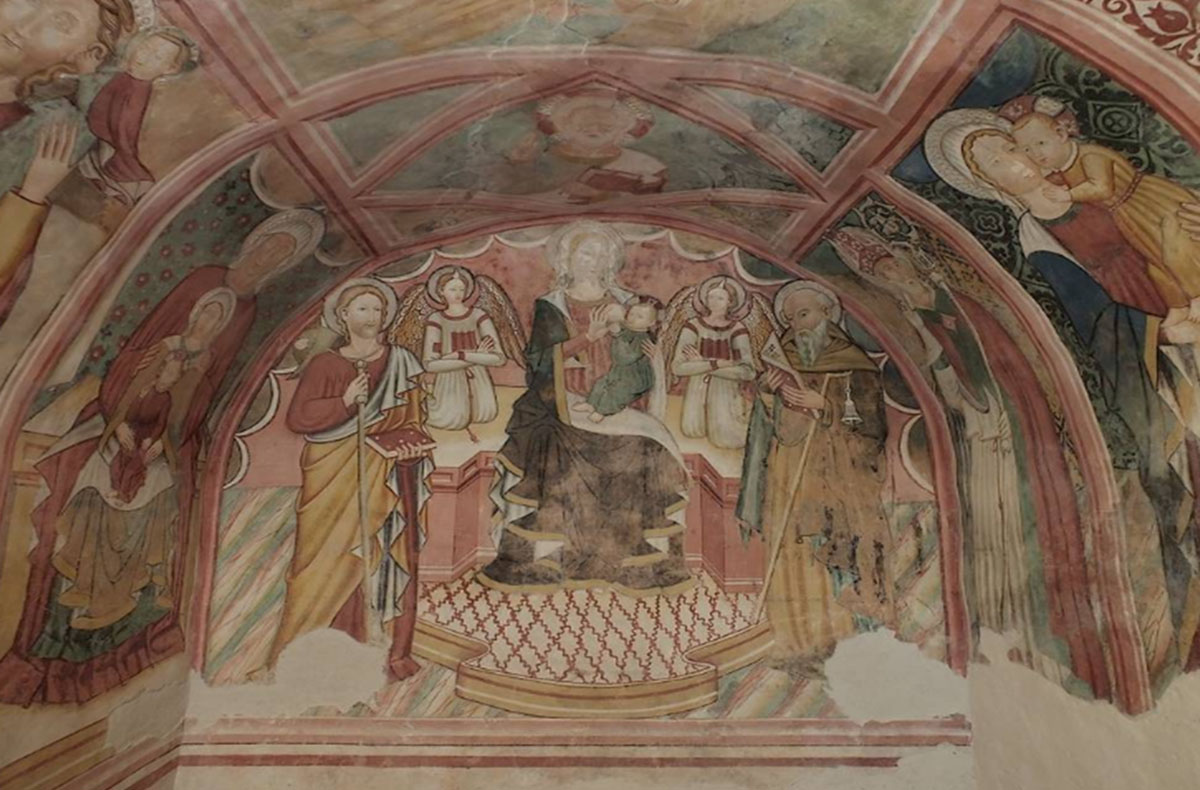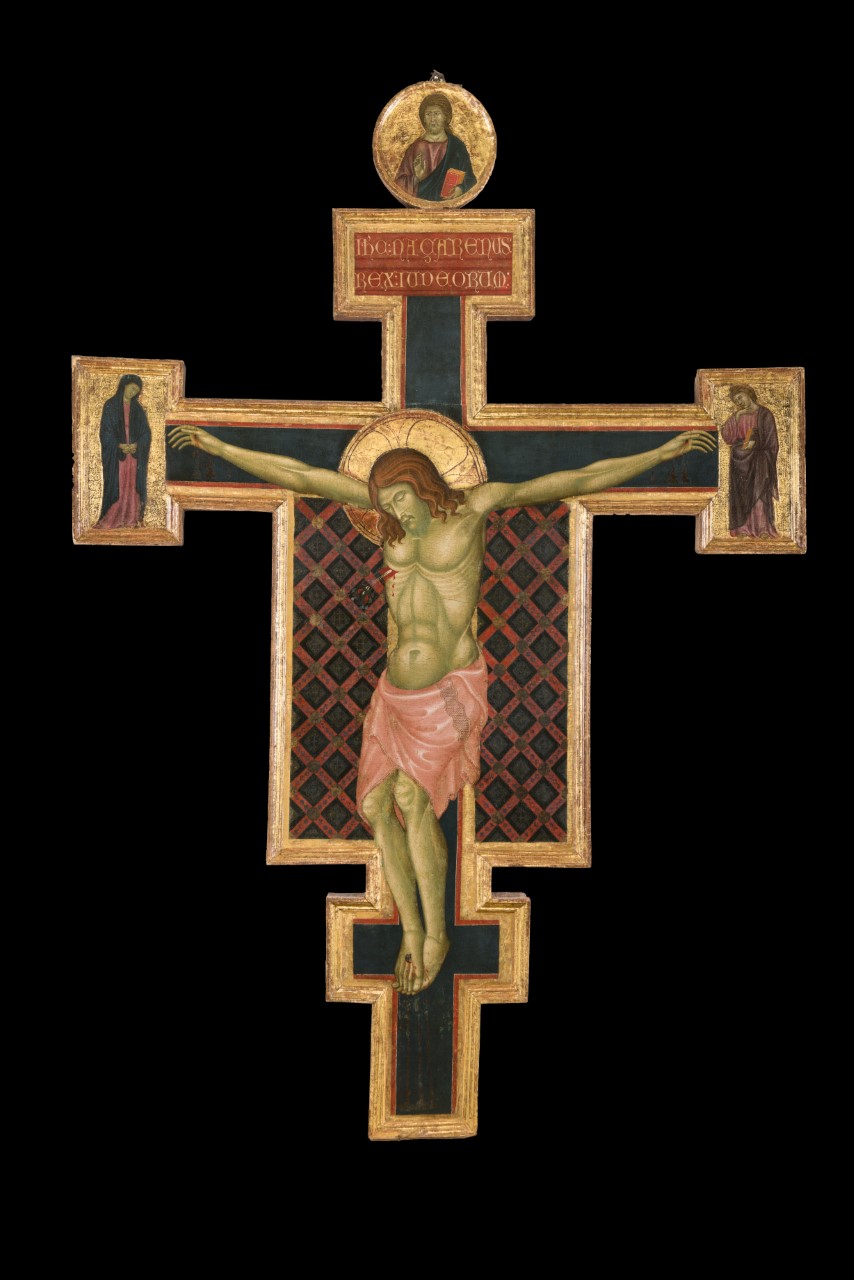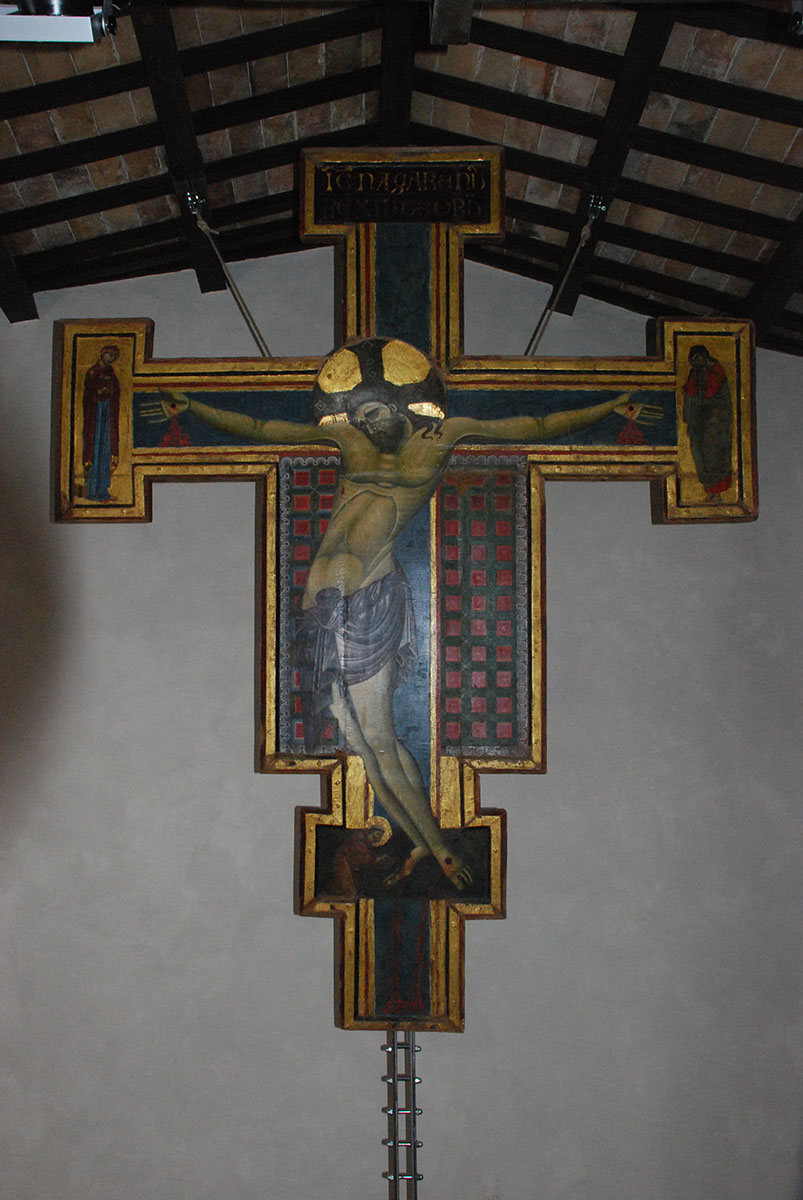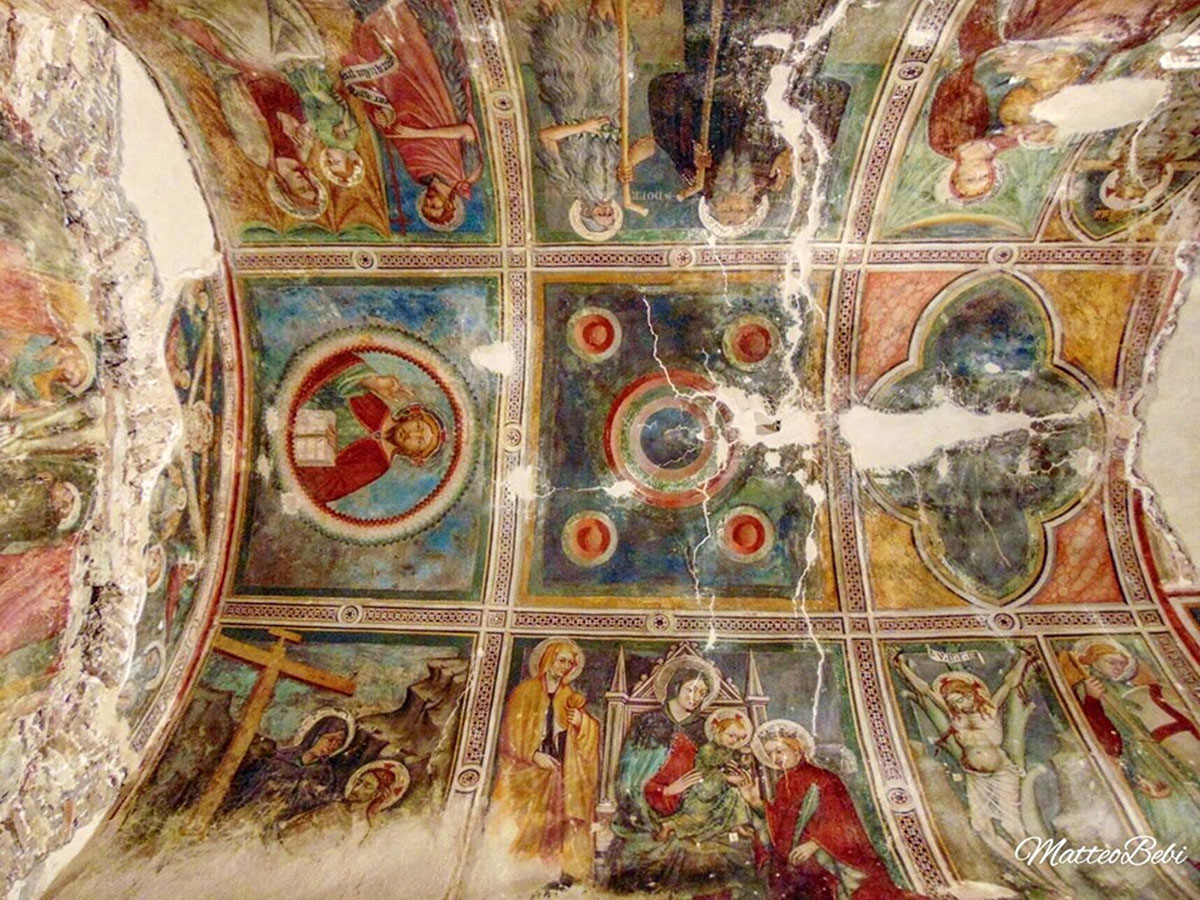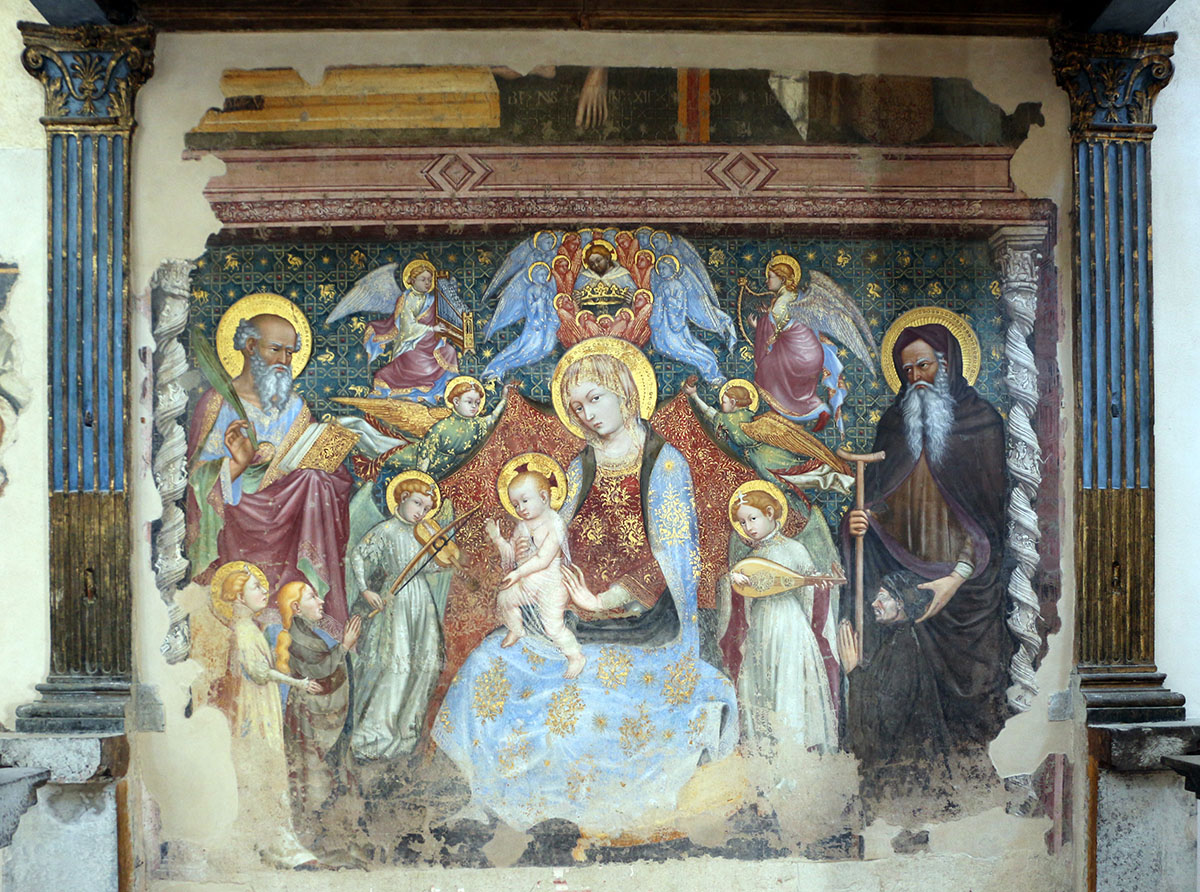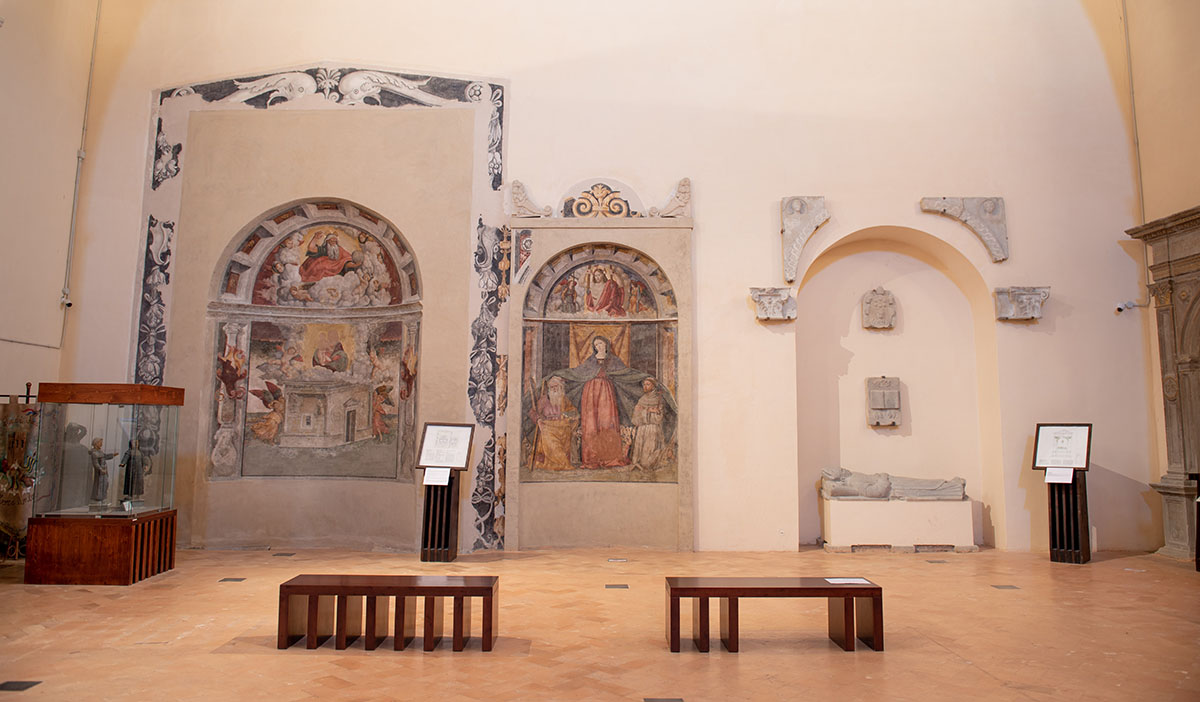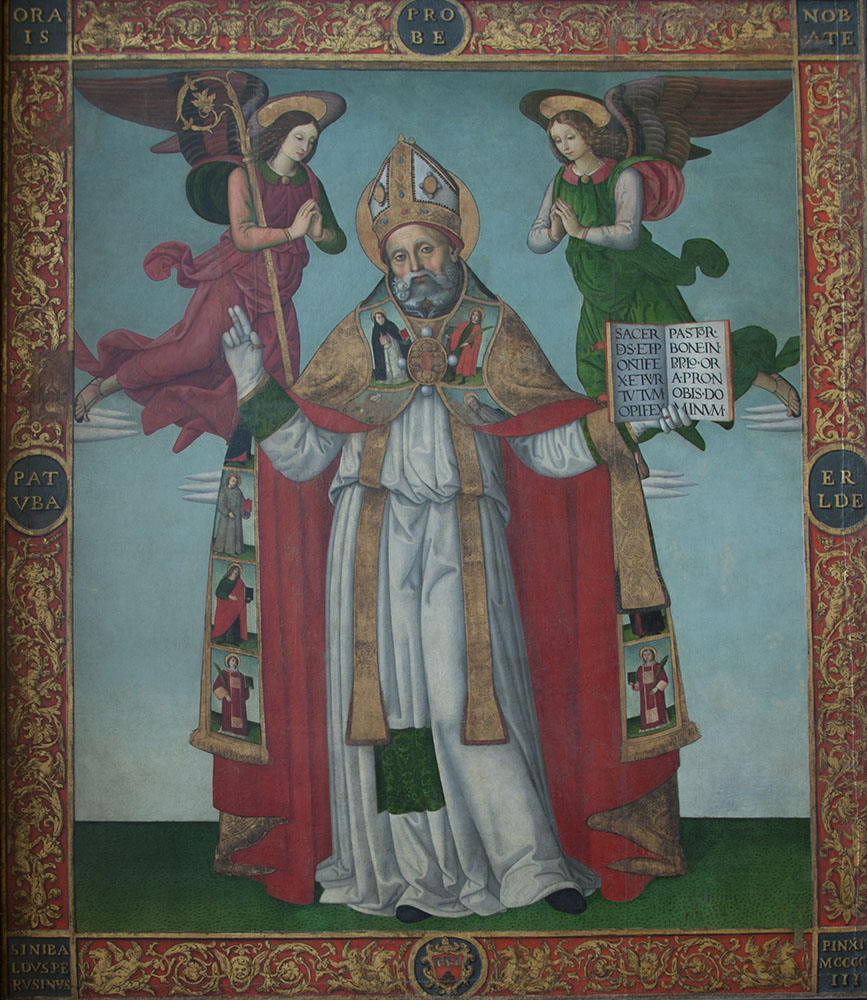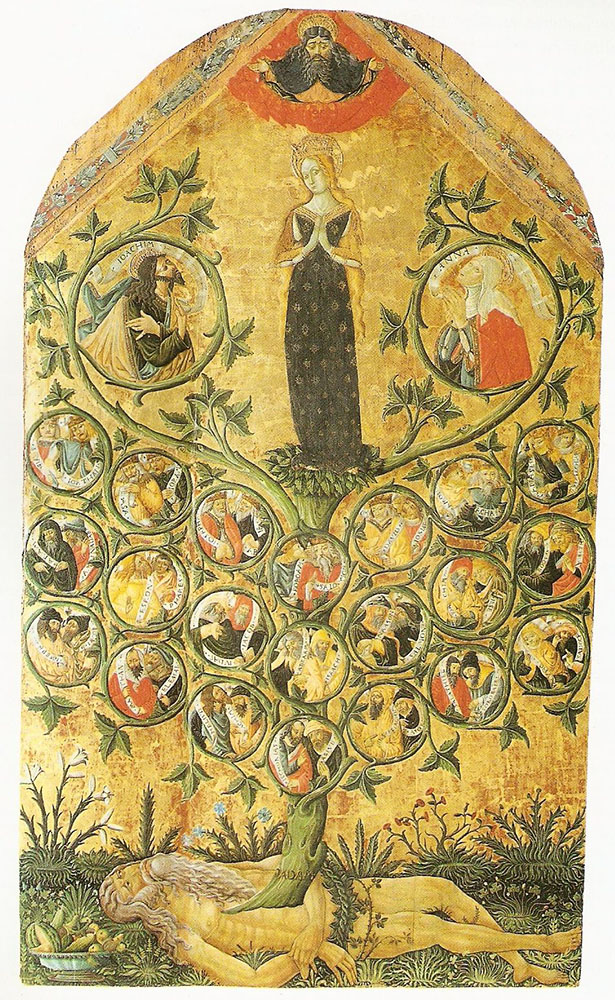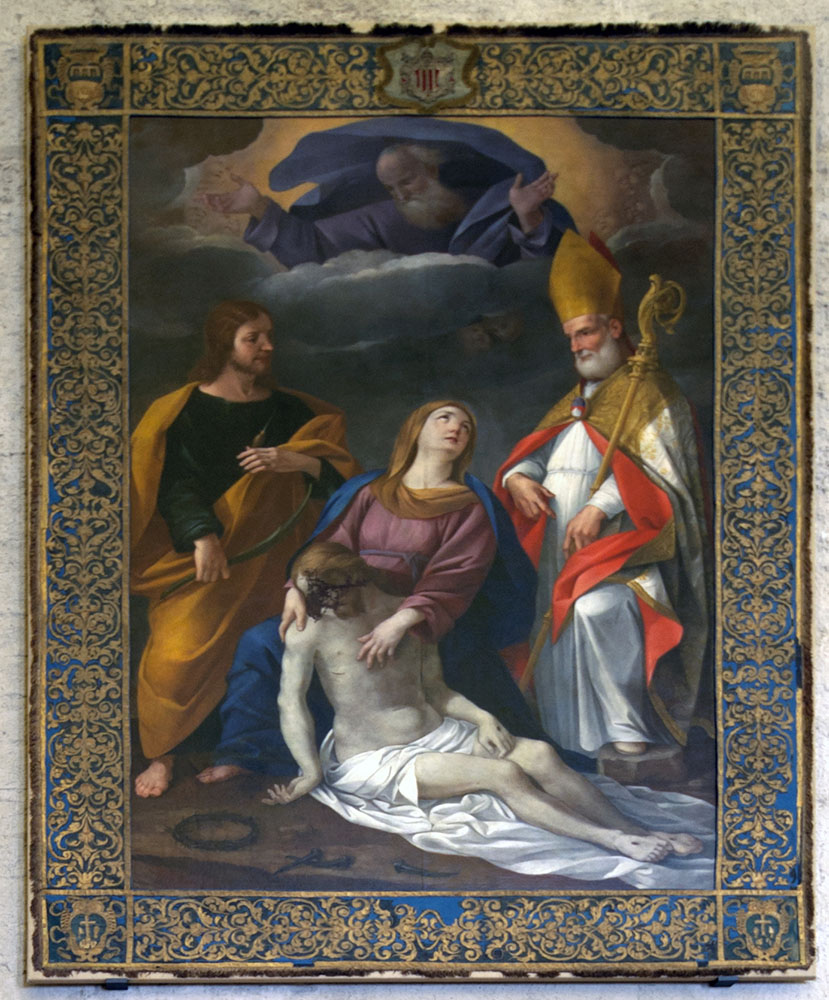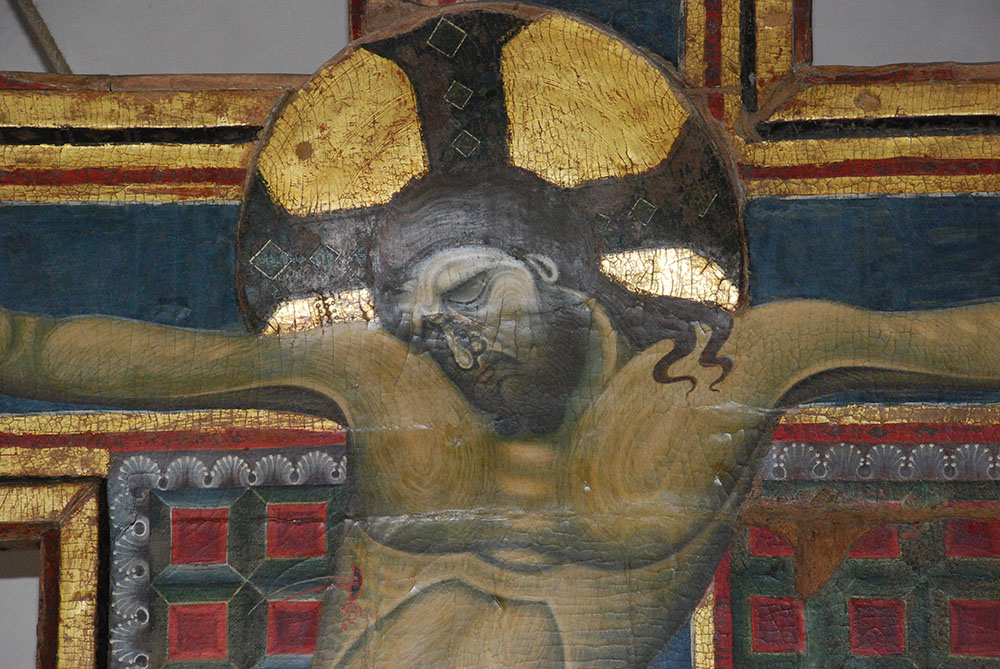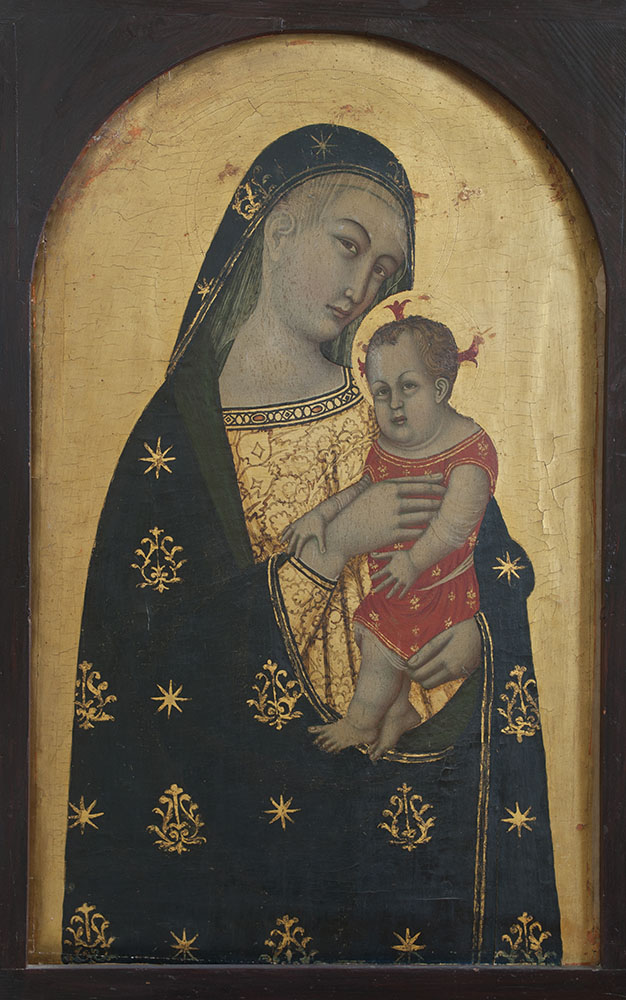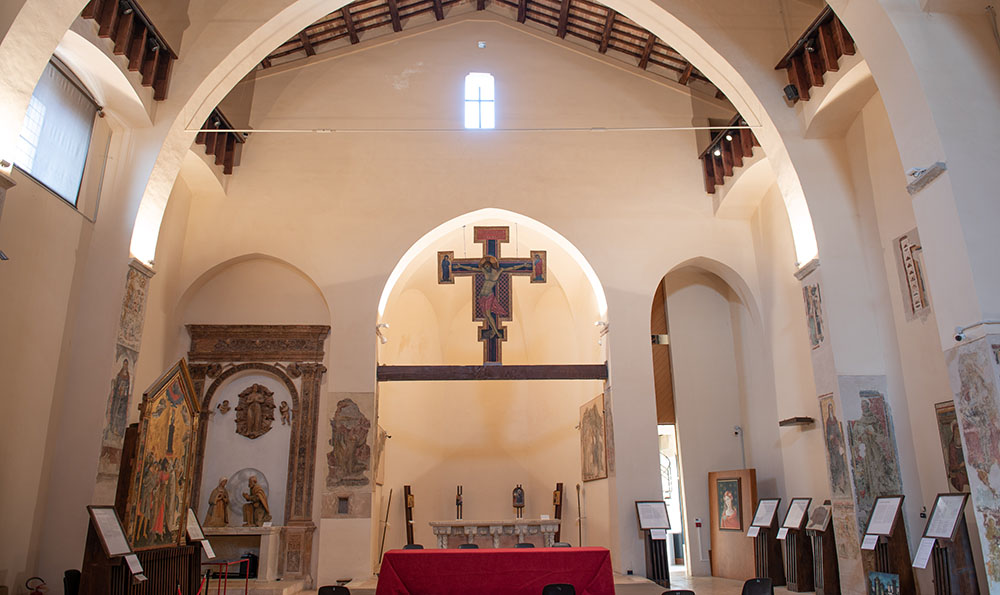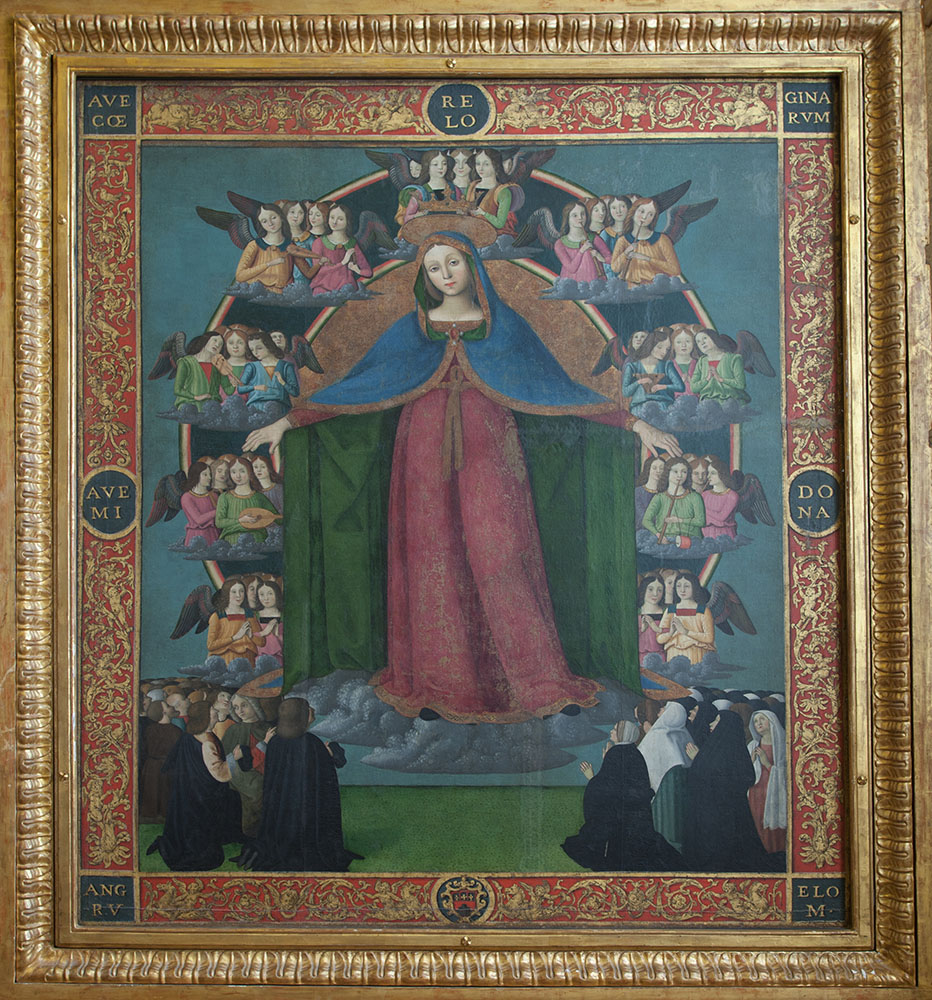The itinerary is designed to retrace the history of painting in the area through the works of important local artists who exemplify the succession of various artistic styles, from the middle of the 13th century to the middle of the 17th Between the 13th and the 14th centuries, painters in the north-eastern area of Umbria were influenced by the new trends emerging from the international workshop which was the Basilica of San Francesco in Assisi, where they frequently worked alongside the great masters as assistants and collaborators. Guido di Pietro da Gubbio, known as the Maestro dei Crocefissi Francescani, was one of the principal artists painting in the “Byzantine manner” initiated by Giunta Pisano. Together with his son, Oderisi, he ran an important workshop producing miniatures and paintings in Umbria and in the border regions and among his works remaining in Gubbio is the admirable Life of St. Francis cycle in the church of the same name. The crucifixes depicting the suffering Christ by Giunta Pisano also underlie those produced by the Maestro del Crocefisso of Gualdo Tadino, whose crucifix painted for the Church of San Francesco is now in the Rocca Flea Civic Museum, together with an anonymous one from the Church of Sant’Agostino. Another notable example is the crucifix by an unknown artist displayed in the Municipal Art Gallery in Nocera Umbra. Giotto’s revolutionary style characterised the activity of the Maestro della Croce di Gubbio, whose name derives from a painted crucifix, dated c.1295, housed in the Museum in Palazzo dei Consoli, which also has a Maestà in the style of Duccio di Buoninsegna. Another work by the same master is the fresco of the Crucified Christ and Mourners with Saints Giacomo and Mariano, in the Diocesan Museum, as are also the fragmentary Maestàs, one of which is in the Palazzo Ducale and the other in the Cathedral. The most important Umbrian follower of Giotto was the Maestro Espressionista di Santa Chiara, who has been identified as Palmerino di Guido from Gubbio. His style, rooted in the Giottesque tradition, but open to Sienese influences, characterises a number of important commissions in Gubbio: the frescoes in the Sforzolini Chapel in San Francesco, the highly expressive wood panel paintings on the old sarcophagus of the patron of Gubbio, Saint Ubaldo, the delicate Maestà dei Laici, in the Diocesan Museum, and the altarpiece, consisting of seven panels, in the Civic Museum. The elegant style of the Sienese artist, Pietro Lorenzetti is represented by an altarpiece, now in the Palazzo Ducale, depicting a Madonna and Child between Saints Peter and Paul and is a clear indication that Sienese culture came to Gubbio not only via Assisi, but also directly. Guiduccio Palmerucci and Mello da Gubbio were both followers of Lorenzetti. The former is the creator of an elaborate polyptych, which was a civic commission, representing an Enthroned Madonna and Child with the Patron Saints, housed in the Municipal Art Gallery in Gubbio. The latter produced wood panels of great refinement such as the famous Pala di Agnano and the Madonna di Valdichiascio, both of which are in the Diocesan Museum, as well as the votive and celebratory frescoes in the Civic Museum. The tradition of Sienese painting in Gubbio continued in the works of Taddeo di Bartolo. Of particular interest are the small panels on a gold background depicting various Saints painted for the Church of San Domenico and which are now in the Palazzo Ducale. With the rise of local signories, such as that of the Montefeltros, after the decline of the Free Communes, the artistic production between the 14th and 15th centuries inclined towards a greater elegance of style celebrating the court. The work of Ottaviano Nelli belongs to this courtly-Gothic trend although it also attracted religious commissions. He painted an altarpiece for the Church of Sant’Agostino in Pietralunga, now in the Umbrian National Gallery. In Gubbio, he painted two celebrated cycles of frescoes: the Life of the Virgin cycle, in the Church of the Friars Minor, and the Life of St. Augustine and the Day Of Judgement, in the Church of Sant’Agostino. His undisputed masterpiece is the Madonna del Belvedere frescoed in the Church of Santa Maria Nuova, which shows clear similarities with the work of Gentile da Fabriano and the Salimbenis, in the use of bright colours and in the technique of gilt ornamentation. Frescoes by Nelli adorn the interior of the Church of Santa Maria della Piaggiola, in Fossato di Vico. Belonging to the school of Nelli was the late-Gothic artist, Jacopo Bedi who painted both panels and frescoes such as the Scenes from the Passion of Christ, painted for Santa Maria dei Laici, now in the Diocesan Museum. There are also numerous examples of Renaissance painting as produced in Umbria and the Marches. The territory of Gubbio was especially influenced by the work of artists from Perugia like Sinibaldo Ibi and Orlando Merlini, whose works reproduced the forms and the iconography of such masters as Perugino, Pintoricchio and Signorelli. Ibi painted the double-faced processional banner, dated 1503, representing the Madonna della Misericordia on one side and Saint Ubaldo in the act of blessing, on the other, which is now in the Municipal Art Gallery. Works by the same artist are in the Cathedral and demonstrate a skilful use of colour. Merlini painted a fresco, dated 1503, in the Palazzo dei Consoli showing Saints Ubaldo and Augustine, holding up the Standard of Gubbio, as well as a triptych, housed in the same building, showing the Enthroned Madonna among Saints. He is also the artist who painted a fresco in the Church of Santa Maria della Ghea, in Fossato di Vico, of which only a fragment remains, representing the Angel of the Annunciation. Another of the foremost exponents of the “modern manner” is Nicolò di Liberatore, known as L’Alunno, from Foligno, who painted the magnificent altarpiece in the Rocca Flea in Gualdo, which was commissioned, in 1471, by the Franciscans for their own church. He also executed a similar altarpiece, representing the Assumption of the Virgin, originally in the Cathedral of Nocera Umbra and now in the local Art Gallery. An eclectic representative of Umbrian art in the middle of the 15th century was Matteo da Gualdo, the “painter notary” who was influenced both by the Foligno school and by the one in Padua. His paintings depict figures whose features are so grotesque as to seem almost unreal. In the Rocca Flea, in Gualdo Tadino, there is his Genealogical Tree of David’s Lineage – The Tree of Jesse, which combines the traditional iconography of the genealogical tree with the newly created one celebrating the Immaculate Conception. The artist also worked in Nocera Umbra creating an altarpiece for the Cathedral, depicting the Encounter of St. Joachim and St. Anne at the Golden Gate, as well as the Immaculate Conception now in the local Art Gallery. An outstanding example of art in the area around Nocera is the cycle of frescoes, from the 15th century, in the rural church in Acciano which has been attributed to an unknown artist from Camerino. The iconography shows the tutelary Saints, together with Patrons of travellers in keeping with the rural setting and the location of the church, on the mountain route between Umbria and the Marches. Mannerism is represented in Gubbio in the paintings by Raffaellino del Colle from Biturgi, who created the Nativity altarpiece and the frescoes depicting the Lives of Saints Placido and Mauro, for the church of San Pietro, as well as the Madonna and Child on canvas for San Domenico. The workshop of Benedetto Nucci was also active at this time and frequently carried out commissions for religious institutions, such as the Pentecost now in the Civic Museum in Gubbio, and the St. Ubaldo in the Cathedral. Both of his sons were his pupils and works by them are in the municipal collection, as well as in churches in Gubbio. Virgilio, who was influenced by the artist Daniele da Volterra and by Michelangelo’s plasticism, has also left his mark in the Church of San Francesco, in Costacciaro, which contains an Annunciation and a Deposition from The Cross by him. Francesco Allegrini was an exponent of Baroque culture and he worked in the Holy Sacrament Chapel in Gubbio Cathedral, on the cupola of the Church of the Madonna del Prato and the vaulted ceiling of Santa Maria dei Laici, which also has an Annunciation on canvas by Federico Barocci. Meanwhile, Antonio Gherardi da Rieti produced the two paintings depicting the Immaculate Conception in San Francesco, and the Birth of The Virgin, in the Cathedral. The style of Guido Reni and Roman Classicism is apparent in the beautiful Banner of the Shoemakers’ Guild, the work of Giovan Battista Michelini, now on display in the Museum of the Palazzo dei Consoli.

